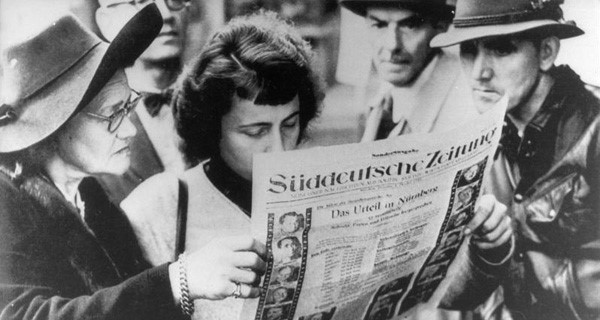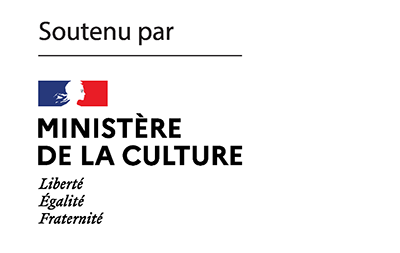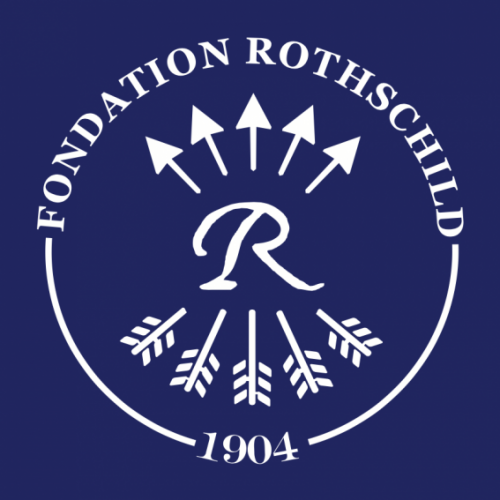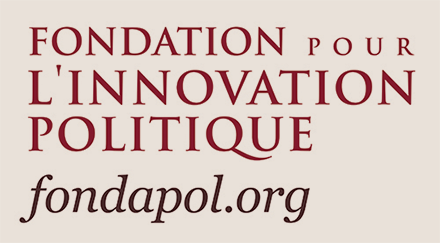David Nirenberg’s Anti-Judaism: The Western Tradition proved an instant classic of Jewish studies on its publication a decade ago. Nirenberg, a scholar of the Middle Ages and Director of the Institute for Advanced Study in Princeton, NJ, presents anti-Judaism as a structural discourse in the history of the West (and arguably in the history of the world at large). The figure of the “Jew,” and the bugbear of “Judaism,” he maintains, have served as epistemic tools for philosophers and theologians to define themselves – and Western civilization – over and against. In such a scheme, Judaism morphs from religion into foil, the Jew from living being into abstraction; and even societies hosting few or no Jews can entertain “Jewish questions.” Nirenberg’s study starts in the Egypt of the Hellenistic Period and ends in our own time.
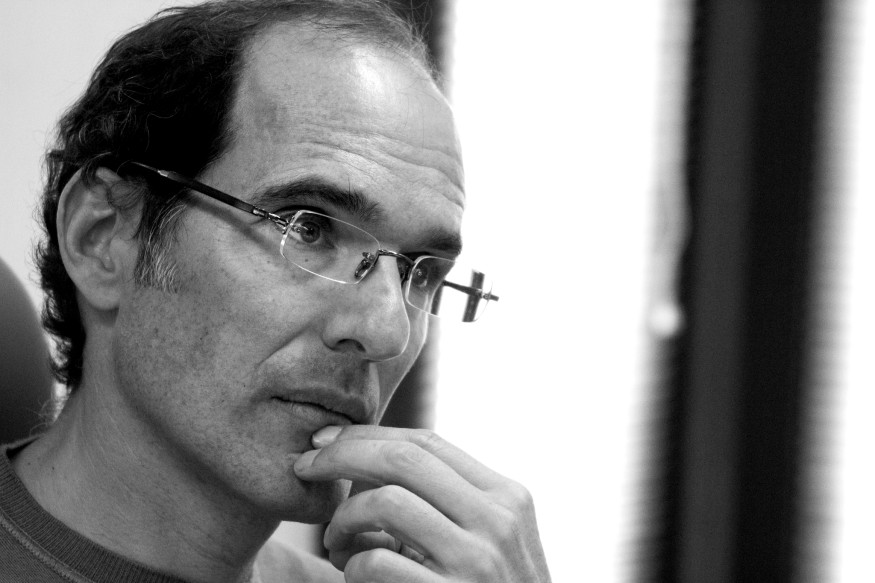
David Haziza: David Nirenberg, your book Anti-Judaism: The Western Tradition, published in 2013 and hailed at the time as one of the most influential works in this field, is going to be published this fall in French, by Labor et Fides. To begin with, what is the anti-Judaism you are talking about and how does it differ, for example, from antisemitism?
David Nirenberg: Antisemitism is generally understood as a kind of hatred directed against a specific group of people, the Jews. By “anti-Judaism” I mean a way of thinking that sees the world as threatened by “Judaism,” which is then understood not as a specific people or religion, but as another way of thinking, of interpreting reality, which is false, corrupt, and even deadly. Anti-Judaism does not require the presence of real Jews, and it will, for example, attack the media or money, Marxism or capitalism as “Jewish” without worrying about whether flesh-and-blood Jews are indeed involved. To go further, I would say that antisemitism is only a sub-category of anti-Judaism: there are, after all, very few real Jews in the world, yet anti-Judaism is widespread!
DH: But then what does anti-Judaism encompass?
DN: It consists of a kind of unmasking: in its eyes, there is a harmful accretion resting on top of discourse, law, tradition, all the signifiers that surround us, money and the media, that we should remove. “Judaism,” on the other hand, is the desire to preserve this accretion. Anti-Judaism, as I define it, is a mode of thought that I consider foundational for the Western tradition. Indeed, as you suggest, it is distinct from the antisemitism and even the anti-Judaism that historians usually speak of when they refer to the Church’s animosity toward the Jewish religion. My ” “anti-Judaism” is a way of positioning oneself in relation to another mode of thought, imagined as “Judaism” but which has little to do with true Judaism. Against this “Judaism,” which is seen as the very opposite of true thought, an anti-Judaism is organized: what I have tried to show in this book is that this anti-Judaism is at the foundation of what the West calls “thought.”
DH: This implies that anti-Judaism, as you define it, is not limited to Christian theology. But still, there is a connection with Christianity, right?
DN: Historically, Christianity may well have laid the foundation for anti-Judaism. “The letter kills but the spirit gives life,” proclaims Paul in Second Corinthians. Christianity will be constituted around a quest for the spirit understood as the antonym of the letter, of the surface, of the law, of the rite, of the flesh etc. The letter is to the spirit what Israel according to the flesh is to the true Israel, the Israel of the spirit – that is, the Church. We see this theme in the Gospels’ Pharisee, who constructs a mask of the Law and the ritual obligations that it entails.
DH: However, in recent decades, much has been said about the Jewish dimension of Paul and the apostles, and even of Jesus himself…
DN: I do not know what Paul himself believed, nor who he was. In fact, that is not my purpose. If we look at his texts, it is clear that his reviling of the literal meaning of the Law and of the Scriptures goes further than a banal criticism would: the literal meaning is dangerous, and therefore the Jew who does not follow Jesus is in some way dangerous. And it is certainly very clear that for Paul “Judaizing” is a serious accusation, and that all that Christianity should be is the opposite of this attitude, for which Paul notably faults Peter.
DH: Don’t you read Paul a little too much like Marcion?
DN: Marcion went further and allowed the nascent Church to structure itself around a more nuanced and complex anti-Judaism as it responded to and countered him. He pushed the opposition between flesh and spirit to the limit, rejecting the idea that the true God, necessarily alien to the world, could have created the flesh… and the Torah. The attacks of Marcion, whom we might call a radical Pauline, against the biblical canon, shaped the first age of Christianity, which had to mark itself off from this extreme current threatening the whole edifice of faith. In truth, the first to attempt (unsuccessfully) to establish a Christian canon was Marcion himself – by eliminating from it everything that smacked too much of Judaism! The response of the (eventually) orthodox theologians was that the Law had to be read in a non-embodied way, which implied that Marcion was right to see it as unpleasantly carnal, but wrong to do as the Jews did and stop there. The Church Fathers reversed the charge: accused of Judaizing, they will retort that Marcion is himself a Jew unable to read the Scriptures correctly – that is, as not being carnal.
DH: So you are always someone’s Jew…
DN: This is very clear in late antiquity. St. Jerome accuses Christians who love artistic representations of Judaizing. He belongs to a strong “aniconic” camp in the early Church, and in his eyes the attitude of some Christians who want to adorn their places of worship with representations is a crude form of Judaism, a puerile attachment to the external and carnal, to the material and visible. But the same Jerome finds himself accused of Judaizing because of his affinity for the Hebrew text (against the Septuagint)as the base for his translation of the Bible, and thus his tendency to accept the authority of the Jewish scripture.
DH: Was there anti-Judaism, in the sense that you understand it, before Christianity?
DN: Yes, I begin my investigation in Hellenistic Alexandria, where an Egyptian discourse targeting the Jews was structured, which was then taken up by Latin authors. The Jews were designated as allies or agents of power and vice versa: Nero, for example, was seen as a friend of the Jews. Moreover, the opposition between flesh and spirit, between letter and spirit, obviously has Platonic connotations.
DH: So anti-Judaism is an idea that was embodied in the political sphere from the beginning?
DN: Yes. The Alexandrians already formulated their anti-Judaism as a discourse aimed at colonial and Roman power. In their eyes, the Jewish signifier represents this power. Similarly, in Rome, the denunciation of the emperors was carried out in an anti-Jewish mode: Claudius or Poppea, Nero’s wife, were designated as Jews, and it did not matter that they were not really Jews, what mattered was the anti-Jewish discourse that made the accusation meaningful. Among the Church Fathers, temporal power is frequently described as “Jewish” since it is on the side of the flesh, of the particular geographical place, of the earthly. When the Christians took power under Constantine, Christian policy was described (by Eusebius of Caesarea) as a constant struggle against Jewish policy. For Ambrose of Milan, for example, the emperor Valentinian “became a Jew.” Once again, the “Jew” can be a Christian and not really be a Jew at all. Anti-Judaism is a way of thinking, seeing and describing the world, a typology. How else to explain the memorable attacks on Jews by John Chrysostom in 386?
DH: Doesn’t the academic consensus say that the Jews were still a serious threat to Christianity at that time, that Christians were still attracted to Jewish rites, especially in the circles of John Chrysostom?
DN: Certainly, but there is something else. His theology had taught him to frame the internal dangers of Christianity as being Jewish in nature. The initial target was the Arians, heretics in his eyes. In attacking the Jews, he did not so much change his target as his ammunition. The Jew is the figure of a more general epistemological and political problem, the problem of hypocrisy, but also of power: it is as a Jew that John Chrysostom describes Julian the Apostate [the Roman emperor who seeks to overturn the Empire’s Christian turn]. That he wanted to help the Jews rebuild their temple must have helped, but it is above all that the Jew does not need to be really Jewish. Julian was “Jewish” only insofar as he perceived Christianity to be an overcoming of Judaism, and that any evidence that Judaism was in no way overcome was a refutation of Christianity. Hence his support for rebuilding the Temple. In this sense, Julian seems to have understood very well the place of anti-Judaism in the constitution of Christian authority and identity.
DH: In what way did the Middle Ages deploy these patristic fantasies?
DN: In the Middle Ages, anti-Judaism was also used to criticize the power of princes, who were described as friends of the Jews, or even as lovers of Jewish women! This was the case with Alfonso VIII of Castile at the beginning of the thirteenth century. We do not know if the Jewess he is supposed to have loved ever existed, but this symbol has counted for a lot and has generated a whole literature, from the Jewish lover of the Count of Soissons to the character of Esterka, supposed favorite of King Casimir III of Poland in the 14th century. The Jews belonged to the prince, they were his servants, slaves or servitors. This idea is codified in a way that echoes another idea, the Augustinian one, that of the Jew as a “living letter,” itself illiterate but destined to be read and interpreted by the Christian – the Jew, in short, as a slave to the meaning given to him by the Christian. Similarly, in the political field, the Jew does not belong to himself, he is the thing, the property of the sovereign. A living letter and therefore half-dead, flesh without a spirit… It so happens that a privileged relationship has resulted from this theological-political equivalence, which greatly served the European monarchies and has contributed to their development by investing the Jews with bureaucratic and fiscal privileges. That said, as subjects without property rights and unable to resist taxation, their earnings from whatever activity – including usury – ultimately benefited the kings.
DH: Is this where anti-Judaism again becomes a critique of power?
DN: Or the other way around. But there is in any case a link between anti-Judaism and anti-monarchical resistance. Jews were attacked, and kings were described as Jews, sometimes their subjects themselves as “Jew-ified.” The first known antisemitic caricature dates from 1233 and comes from England. It shows a city dominated by an army of demons and in the center a demon holding a Jew and a Jewess by the nose. Above them is the three-headed Antichrist, crowned in the image of the king of England, receiving taxes from the city oppressed by his demonic or fiscal army. However, his name is not that of Henry III, who reigned at the time, but of the powerful Jewish banker Isaac of Norwich!
DH: You also make the link between this political anti-Judaism and the blood libel.
DN: Yes, one moves progressively from a criticism of rites alleged to be macabre to those said to be murderous, of imaginary ritual crimes. Anti-Judaism uses this superstitious – but also theologically very rich – motif to denounce the monarchical power that protected the Jews. Anti-Judaism, a process of unveiling, is intended to be the unveiling of a power condemned for its lack of Christian authenticity and its unjust protection of the infidel, perfidious and criminal Jews. This has contemporary echoes: one thinks of conspiracy, which emerges from the paroxysmes of anti-Judaism, even when it is not directly aimed at flesh-and-blood Jews.
DH: One generally imagines a “pro-Jewish” Reformation, but reading you it seems that there was indeed a typically Protestant anti-Judaism.
DN: Erasmus (who was not Protestant) and Luther accused their opponents of Judaism, and as we can see, they were not the first. Erasmus says in reference to this that “if hating the Jews were enough to make us Christians, there would be only good Christians everywhere,” recognizing in this way that anti-Judaism is a constitutive stage of Christianity, but at the same time and not without irony, that it is not enough. This means that their differently reforming visions will be constituted as anti-Judaisms, as forms of opposition to a way of thinking identified as Jewish, but which is in this case that of good Christians – and, by the way, of enemies of Judaism, of the “real” Judaism. Luther’s antisemitism is well known, but I will go further. In the Protestant project itself, there is a form of anti-Judaism. For Luther, the discovery of justification by faith constitutes the definitive break, preached by Paul in his time, with Judaism. The Catholic Church, with its attachment to rituals and its legalistic understanding of divine justice, was “more Jewish than the Jews” so that, as Luther ironically put it, “one would almost have to become a Jew to become a good Christian.” This sentence precedes by twenty years the text On the Jews and Their Lies (1543). It is not at all charged with the same hostility, but it already attests to Luther’s anti-Judaism as a way of thinking, and to its intrinsic link with the Protestant project, which seems at times to have been understood as a more complete dejudaization, a more thorough form supersession than that of the Church Fathers.
DH: But anti-Judaism, taken in the sense that you give it, is by no means limited to Christian theology. Could you go back to its links with modernity?
DN: The Enlightenment can be understood as a vast movement of revolt against Judaism (or “Judaism”). Spinoza attacked all the churches, but like his Christian predecessors, he used the accusation of Judaism. For him, “Judaism,” which could also be Christian, consisted in seeing Scripture as entirely inspired and divine and, in so doing, reduced both God and man to the rank of beasts, since the authors of the Bible had formed a law and a morality that was indeed crude and bestial. Anti-Judaism, here, is therefore first of all biblical criticism. It should be remembered, however, that Spinoza takes up the supersessionist themes and radicalizes them in a way that would have been impossible for a Christian – for example, by systematically downgrading Mosaic prophecy in favor of the preaching of Christ, who would have used the language of reason. It should be noted that clandestine French translations of the Theological-Political Treatise circulated under the evocative title of Treatise on the Superstitious Ceremonies of the Jews, Both Ancient and Modern. We know what happened to anti-Judaism among the “philosophes,” especially Voltaire. Intolerance is Judaism! An example perhaps even more paroxysmal than Voltaire is Kant. This one, unlike Voltaire, calls himself a Christian, but his Christianity wants to be enlightened precisely in that it would have completely broken with Judaism, understood as slavery to the law, to forms, to rites. The Aufklärung would then be, in Kant’s terms, “the euthanasia of Judaism.” It is the same intuition, even more radicalized, which guides Marx when he affirms that the West, insofar as it utilized money and private property, produces Judaism “from its own entrails” and that the emancipation of the Jews can only be the emancipation of society from Judaism. The Enlightenment, and then the Revolution, were indeed thought of as anti-Jewish projects.
DH: The French Revolution too?
DN: There is some of that, yes, even if it is this event that emancipated the “real” Jews. I quote, for example, the speech given by the constitutional bishop Sermet during the Fête de la Fédération on July 14, 1790. In this speech, Sermet describes the Revolution as a Pauline moment, the new France being to the old what Christianity is to Judaism. Moreover, the Pauline theme of regeneration, as Mona Ozouf has shown, was everywhere. We find, among the Jacobins, another theme, that of hypocritical, Pharisaical conversion… That said, the Jacobins rarely attacked flesh-and-blood Jews, at least as Jews. Here again, anti-Judaism is indeed a way of thinking, an intellectual typology. Moreover, a counter-revolutionary anti-Judaism developed at the same time. Burke describes the French revolutionaries as “Old Jewry,” hypocrites ready to destroy the world in the name of their selfish interests, petty lawyers, accountants and merchants.
DH: Here we find the two poles – left and right – of contemporary antisemitism… In any case, your reflection is similar to that of Jean-Claude Milner in Les penchants criminels de l’Europe démocratique (The Criminal Penchants of Modern Europe, not translated). Is this anti-Jewish modernity that you describe a form of modern Marcionism?
DN: In a sense yes, but perhaps without Marcion’s metaphysical quest. To return to Kant, his essay on “Religion within the Bounds of Bare Reason” sounds like Luther, but Kant goes much further. Christ, according to him, owes nothing to Judaism! And Christianity can only really achieve what it has always been – a universal religion of love and reason – by definitively breaking with its origins, or rather its Jewish mask.
DH: Yet the Jew has been described as a vector of modernity. There is a link, for example, between anti-Judaism and hatred of the modern press, of the printing press already…
DN: The old stereotypes associating the Jews with commerce, with mercantile cunning, can be understood in terms of anti-Judaism – as I define it – as a critique of instrumental reason, of which the Jews would be the slaves and the vectors. And from there, of rational, “Cartesian” modernity. For the press, it is something else. The Jew is the letter, hence the medium. The printing press is seen as Jewish for this reason, and the newspaper culture, likewise, in the 19th century, and the Internet today. From this arises a dialectic and a permanent reversal. The printing press is Jewish and, at the same time, it is the press that will stir up the masses against the Jews and Judaism, using the new, more fluid relationship to the letter that its technique allows. The same thing is happening nowadays with the Internet. Each new avatar of the “letter that kills” is Jewish and is at the same time thought of as a springboard for anti-Judaism.
DH: You mentioned Spinoza. Do you think that biblical criticism, of which he is in a way the father, has remained a form of anti-Judaism?
DN: Certainly not biblical criticism in general, but it is obvious that the classic documentary hypothesis, that of Wellhausen, is part of a double approach, Christian (Protestant) and modern, of unmasking Judaism – identified in this case with a specific source of the Pentateuch, the priestly source, which Wellhausen says blocks access to heaven, against others, in particular compared to the Deuteronomist. There are, however, other forms of biblical criticism, even documentary hypothesis. Benjamin Sommer, in Revelation and Authority, turns the problem on its head by reading Wellhausen against the grain and showing that in ancient Judaism, the letter did not count as much as its oral substratum: the Torah is oral, and therefore moving, before being written, and the documentary hypothesis would allow us to rediscover this oral dimension, which is frozen by Scripture.
DH: Some at the time of Wellhausen, I am thinking of the Kantian philosopher Hermann Cohen, described Judaism as a break with the world of myth. I have the impression, reading you, that anti-Judaism would be precisely a form of reenchantment of the world: to go and look behind the letter, behind the signifier, behind the surface, find who knows what sort of secret…
DN: Not quite, no. In my opinion, it is anti-Judaism that is more a form of demythologization. Anti-Judaism sees the letter as being on the side of myth, the “Judaic” superstition, which is denounced as such, is the world of myth. And anti-Jewish modernity takes up this idea entirely, as we see with Kant, who wants to rid Western thought completely of its remnants of Judaism. I must add that I am not myself a great advocate of demythologizing: more than one area of human experience can only be approached through myth!
DH: Islam also has a tradition of anti-Judaism, which has obvious contemporary implications, the origin of which you detail. Could you come back to this?
DN: It is indeed a tradition that is deeply rooted in Islam, present as early as the Qur’an and developed through references in the Sirat Rasul Allah, the first biography of Muhammad, where it is reported that Muhammad’s uncle was warned by a monk to protect the boy against the Jews. In the Sirah, the Jews are systematically used to construct a certain narrative of the Prophet’s life, where they play the role of enemies. It is this enmity that will propel the building of the Islamic tradition. The Jew is described as a rebel and a corrupter. True” Judaism is at the heart of the prophetic tradition which the Qur’an appropriates, but it contrasts it with the Judaism of the “real” Jews, who are hypocrites and forgers. What dominates is the theme of Judaism as hypocrisy, a theme borrowed from the Christian critique of Pharisaism – of “Judaism”. To Judaize is to be hypocritical, and to be hypocritical is to Judaize. The insincere Muslim sides with the “People of the Book,” he has caught their disease. Jewish duplicity is thus erected as an axiom of Koranic ontology. It is interesting to see that this axiom is first related as a lesson from the Christians: everything begins with this monk. There is no way of knowing if this is a fact, but my method is not concerned with this: si non è vero è ben trovato (if it is not true, it is well conceived)!
DH: Of Christians who were Jews… Was there originally a Jewish anti-Judaism?
DN: On reflection, I think I could have started there, yes. The first traces of this opposition between letter and spirit, and therefore of anti-Judaism, can be found in the prophets of the Bible, in Jeremiah for example, and in certain psalms: one can think of Psalm 40, with its criticism of sacrifices. The whole theme of sacrifices, of purely external religion, of words that would hide the truth of the heart, exists in the Hebrew Bible before becoming so essential to the constitution of Christianity.
DH: Is anti-Judaism therefore a purely Jewish invention?
DN: No, of course not. For a discourse to become so dominant, it had to be overdetermined. But it is certain that the sectarian communities that were to be at the origin of Christianity and Islam drew their logic from these biblical elements, which themselves probably owed to the influence of other peoples. Anti-Judaism, do not forget, only uses the Jewish signifier to think about the world – independently of the existence of Jews!
David Haziza
David Nirenberg was born in Argentina in 1964. He taught at the University of Chicago, where he was a member of the Committee on Social Thought. He is currently director of the Institute for Advanced Study at Princeton, one of the most prestigious research centers in the world. He has worked on minorities in the Middle Ages. His book ‘Anti-Judaism – The Western Tradition’, published in 2013, is a milestone in the field of Jewish studies.
